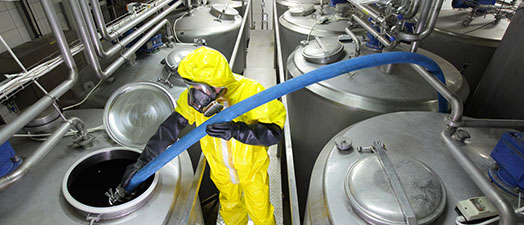Capture Knowledge, Deploy to Teams & Improve Operations
Safety, quality, and efficiency depend on the ability to provide actionable information to teams.

Process standardization, quality control, and capturing tribal knowledge are critical operational objectives you can achieve using Acadia as the enabling platform.
- Capture process knowledge from retiring team members
- Provide standardized onboarding & training that is less labor intensive
- Deploy procedures and documentation for quality & maintenance teams
- Communicate critical safety information efficiently to all team members
Single Source of Truth
Delivering critical information to employees is commonly obstructed by a lack of documentation. Team members receive work instructions and training through labor-intensive, shoulder-to-shoulder instruction. This creates safety, quality, and efficiency challenges that limit a plant’s production capabilities.
By implementing Acadia, you can provide auditable SOPs, active work instructions, hands-on training tools, and on-demand job aids to each of your operations teams. This helps eliminate confusion and firefighting when things go wrong. It also prepares you for disruption from illness or turnover.
Training & Onboarding

Consistent process outcomes start with your training approach. We learn better while doing, so job-embedded training programs are immediately more relevant than classroom or course-based activities. They take less time. They require less effort to pay attention. Most importantly, they stick.
Acadia improves training effectiveness by injecting training directly into work. Employees have easy access to SOPs and other job aids at the moment they are performing the task. Managers can check comprehension with quizzing and evaluations to ensure everyone gets the support they need.
By making training more efficient and productive, you can adopt process improvements and help new employees get up to speed more quickly.
More on training:
- Your training approach can make or break your process execution
- Process training that helps your team learn faster
- Cementing process knowledge in place
Audit Trail & Accountability

In most operations, SOP compliance correlates directly to performance. When compliance expectations are met, rework, yield, waste, and safety KPIs are also improved.
Managers with visibility into employee SOP compliance can identify who is performing tasks the right way and who might need additional training or support. By digitally tracking compliance, you also create an audit trail that can help you comply with ISO standards, OSHA regulations, or FDA guidelines.
If your visibility into compliance is limited because maintenance protocols, quality procedures, etc. aren’t documented, it’s probably also making process improvements harder to track.
Make accountability part of workflow:
Employee Engagement

Bottom-up improvement is effective because frontline employees are closest to the problems and are best able to identify and solve them.
When your employees are empowered to improve their work processes, they will make their tasks as frictionless and efficient as possible. When they feel ownership of their process, it is easier to hold them accountable to it. When these things happen naturally and continuous improvement has become part of your culture, your employees will feel more ownership in their work and become less likely to leave.
Retiring Workforce – a real-world example
Progressive operations teams are using technology to retain organizational memory from outgoing team members and pass it to those who replace them. When done correctly, this can have minimal impact to production.
Recently, one of our customers was working to fill an internal skills gap by developing a 17-week program to identify future managers. The program trained applicants on multiple roles for their manufacturing facilities. Instead of relying on presentations in a classroom setting or printed instructions, each employee was given access to Acadia on a mobile device.
- Procedures required to perform each role were easy to find and could be retrieved as the person performed the work.
- Procedures were automatically transformed into a series of step-by-step task lists.
- Each task was simple and clear, and many had accompanying job aids such as diagrams or videos that helped provide context and further instruction.
- Employees could also provide feedback, as they worked, when instructions weren’t clear. This helped the instructors to improve procedures for the next group of trainees.
Because the task lists were completely auditable, the instructors could see which employees were using the procedures most effectively and which needed additional support. Trainees were also quizzed regularly to help identify those who should spend more time on a particular procedure and those who could advance.
With the success of the reskilling program, the company began to close its workforce gaps. It also expanded the use of Acadia to all line workers. Since launching the broader program, the company has begun closing performance and training gaps, exceeding gross line yield targets, meeting quality KPIs and reducing injuries.
Enterprise Ready, but without the headaches
Acadia is workplace tested and built to serve the needs of large organizations first. Our standards meet the most rigorous requirements of our enterprise customers working globally in manufacturing and other highly regulated industries.
"*" indicates required fields
Ready to crush your goals?
"*" indicates required fields